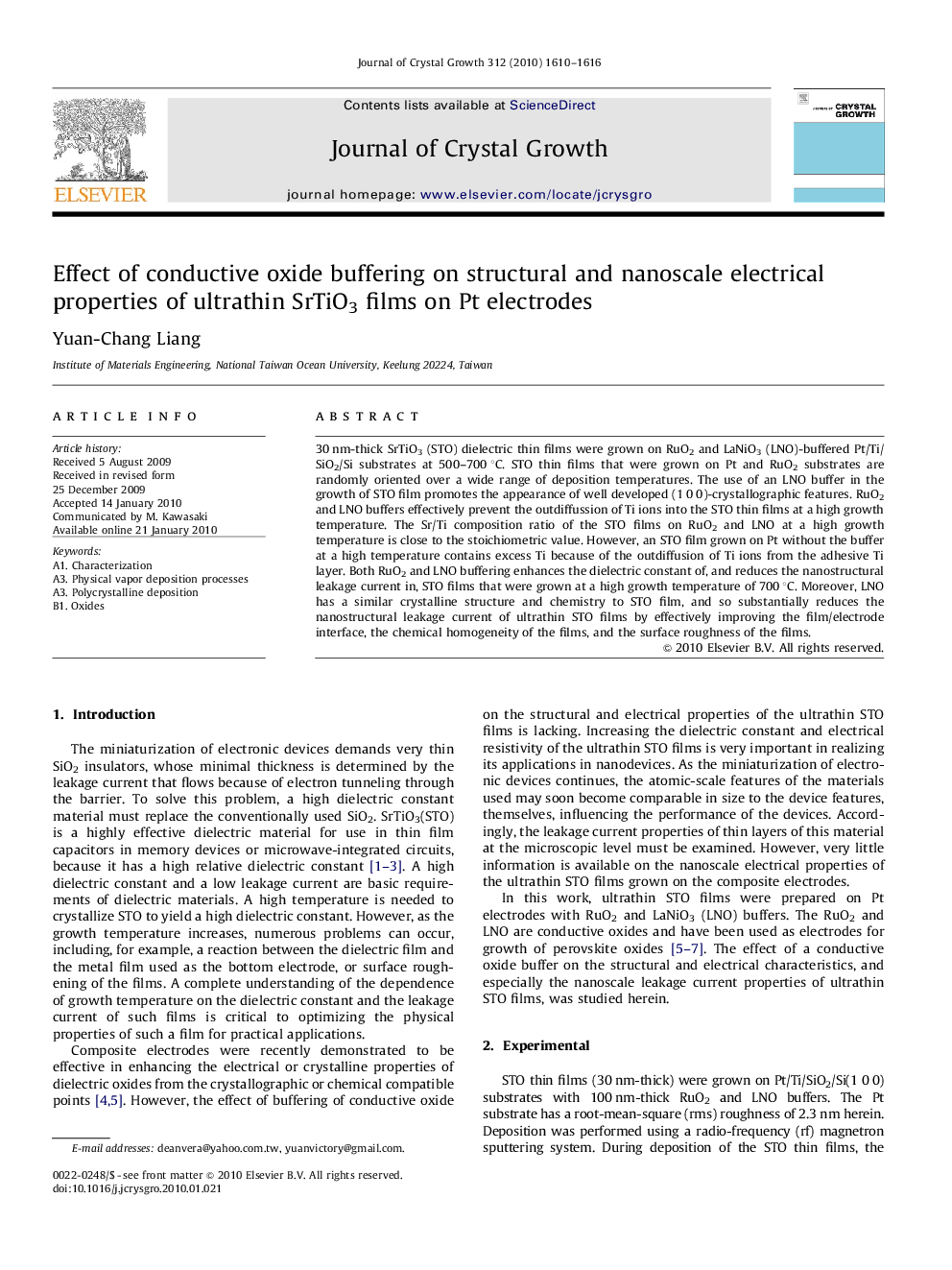| Article ID | Journal | Published Year | Pages | File Type |
|---|---|---|---|---|
| 1793331 | Journal of Crystal Growth | 2010 | 7 Pages |
30 nm-thick SrTiO3 (STO) dielectric thin films were grown on RuO2 and LaNiO3 (LNO)-buffered Pt/Ti/SiO2/Si substrates at 500–700 °C. STO thin films that were grown on Pt and RuO2 substrates are randomly oriented over a wide range of deposition temperatures. The use of an LNO buffer in the growth of STO film promotes the appearance of well developed (1 0 0)-crystallographic features. RuO2 and LNO buffers effectively prevent the outdiffussion of Ti ions into the STO thin films at a high growth temperature. The Sr/Ti composition ratio of the STO films on RuO2 and LNO at a high growth temperature is close to the stoichiometric value. However, an STO film grown on Pt without the buffer at a high temperature contains excess Ti because of the outdiffusion of Ti ions from the adhesive Ti layer. Both RuO2 and LNO buffering enhances the dielectric constant of, and reduces the nanostructural leakage current in, STO films that were grown at a high growth temperature of 700 °C. Moreover, LNO has a similar crystalline structure and chemistry to STO film, and so substantially reduces the nanostructural leakage current of ultrathin STO films by effectively improving the film/electrode interface, the chemical homogeneity of the films, and the surface roughness of the films.
